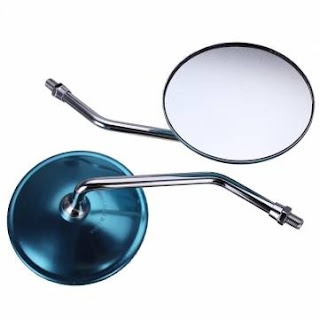Yamaha revolutionizes the lounge of Milan with a new YZF-R1 completely new, significantly changing the concept of supersport street.
Yamaha was important to start from scratch in this new project. In this way the engineers have not had any restrictions when introducing new aspects in the new YZF-R1. The result of such a risky project is a machine that makes available to any motorcycle rider a material that until now was only hand Yamaha riders.
It has little to do with its predecessor, although the DNA of competition remains the same. The new R1 combines perfectly performance and control, with a machine designed for sporty driving and práctimamente created for use in circuit.
The structure of the known chassis Deltabox built in aluminum, magnesium subframe and swingarm aluminum. All this combined with weight reductions on numerous engine components and wheels made of magnesium (900gr less compared to alloy wheels), makes the new R1 reduces its weight up to 179Kg vacuum (199 with full tanks).
The power is given by a new engine that has nothing to do with the previous R1. This is a 4cilindros in line, 4 valves per cylinder, air intake forced as used in the M1 (example of technology transfer between competition and R1), which develops nothing more and nothing less than 200hp . To curb such power has been equipped dual 320mm front disc and 220mm rear one and the front suspension has been developed in collaboration between engineers and Yamaha KYB resulting in an inverted 43mm and 120mm travel fork.
As mentioned the new R1 is designed with special attention to track use, and this is reflected in the incredible technology that equips, especially considering that it is a motorcycle mass production. Part of this technology comes directly from MotoGP, with elements such as riding the M1 Lorenzo and Rossi.
The new R1 mounts a measuring unit of inertia IMU (Inertial Measurement Unit) that provides complete control of the machine, and because she has been able to equip a control sensitive traction tilt, yaw control, lift control the front wheel and output control. In addition to everything that makes possible the IMU unit, the R1 has fast gearshift, ABS and a unified brake system that distributes braking when only used the front brake lever or when both combined brakes are used (only in if using only the rear brake would not work the unified brake).
The aesthetics also has nothing to do with the previous model. The detail is striking is the dome, which looks a free optical front, where in his blue version can see a colorful design that encourages imagine a dorsal the style of racing. In favor of this aesthetic so similar to the optical MotoGP prototypes they have been relocated to the bottom of the dome, almost hidden, but giving the new R1 of an aggressive character.
There are many details reminiscent of the M1, especially if we omit the mirrors (which are designed to be easily removable), with only a quick glance we see a large dome that allows the pilot to engage fully to the aerodynamics of the bike the minimalist fairing that leaves no major mechanical components view also reminds the M1, even the shape of the deposit with those species of gill and ergonomic shape leaving room for the knees.
As we have discussed this issue of R1 will have a limited number of units, so all teams or riders who are interested in acquiring it must register through their national dealer from December 1. It is anticipated that demand is outstripping supply, so that ultimately the distribution is at the discretion of the official distributors.
Both versions of the R1 will be available from March 2015.
Additionally, if you need to purchase some of the motorcycle parts, you could search at Banggood, which is one of the wholesale platform to provide you the affordable prices, such as, yamaha hand grips, yamaha fz8 mirrors, etc.
















